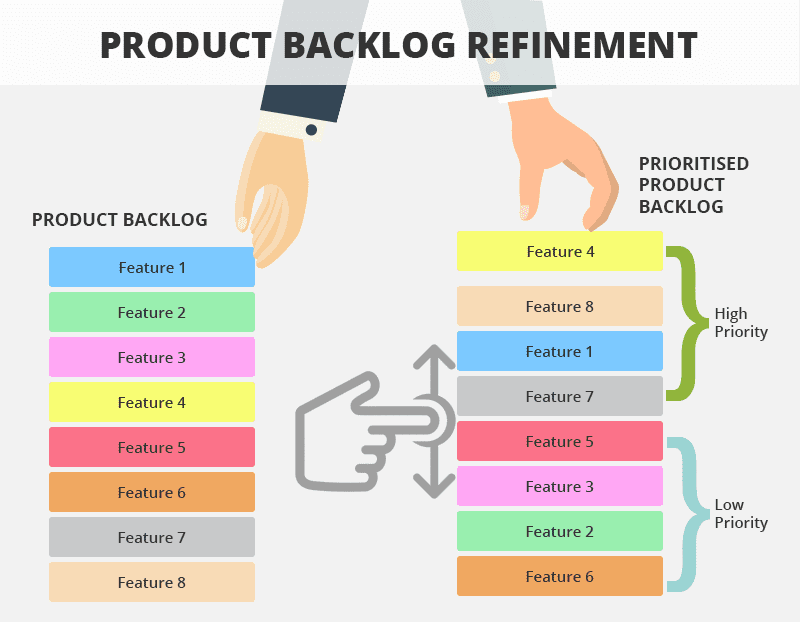Table of Contents
Last updated on July 8th, 2020 at 11:49 am
As you might already know, product Backlog is simply a list of everything you have to do to complete your project. It helps you find all your requirements for the product at a single source. This article discusses how we can improve the product flow by continuously refining your product backlog.
The Refinement Process
We can improve our product flow by merely comparing the estimates using time-dependent sizing. But, most of the product backlog items (PBI) won’t be clear enough for such an analysis.
One strategy to approach this issue of poorly PBIs is to spend more time on it and refine them as you go. This process will take time, but the total time taken for the project will be significantly reduced. It also leads you towards better reliability and velocity.
In the early days of Scrum, the sprint begins with a time-boxed planning meeting. Such planning meetings would usually go long and frustrate the team members attempting to estimate PBIs. The results were overly vague product backlogs. To eliminate this issue, the Scrum guide now specifies that along with the planning meeting, a continuous refinement process should take place.
Benefits of Continuous Refinement
This refinement process involves estimation and addition of details to the PBI. By doing it continuously, the team will be able to deliver more consistent and improve the quality of their job. It can also reduce the duration of the planning meeting at the start of the sprint. The regular refinement process allows the team to deal with the estimation process in small pieces. By improving the productivity of the team, the refinement improves the product flow.
However, the refinement process will not solve all the difficulties. You still have to discover alternatives and problems during the implementation. But with the Refinement process, the questions will be smaller and much easier to find an answer.
How to Carry Out Refinement?
The major challenge in implementing this practice is to have a refinement process that doesn’t tie up the whole team in meetings. The solution suggested by the Scrum Guide is to limit the refinement to 10 percent of the team capacity. In that way, we can complete the refinement of a 4-week sprint in 2 days. The refinement meetings should be short and time-boxed, and the number of backlog items covered in each session shouldn’t be the main focus. In most scenarios, the longer refinement process will result in a shorter planning meeting.
In ideal cases, all team members are supposed to be a part of the refinement conversations. Dividing the team excessively will result in missing out important questions and insights. Also, be sure to have an estimation of every backlog item you cover at the end of each session.
Agile planning is all about striking a perfect balance between precision and accuracy. So, your backlog doesn’t need to be consisting of the full specification of every item. Although, it is important to have in-depth knowledge about each of them. Spending little more time of ensuring that everyone in your team really understands the backlog will help you deliver more value in a shorter time period.

